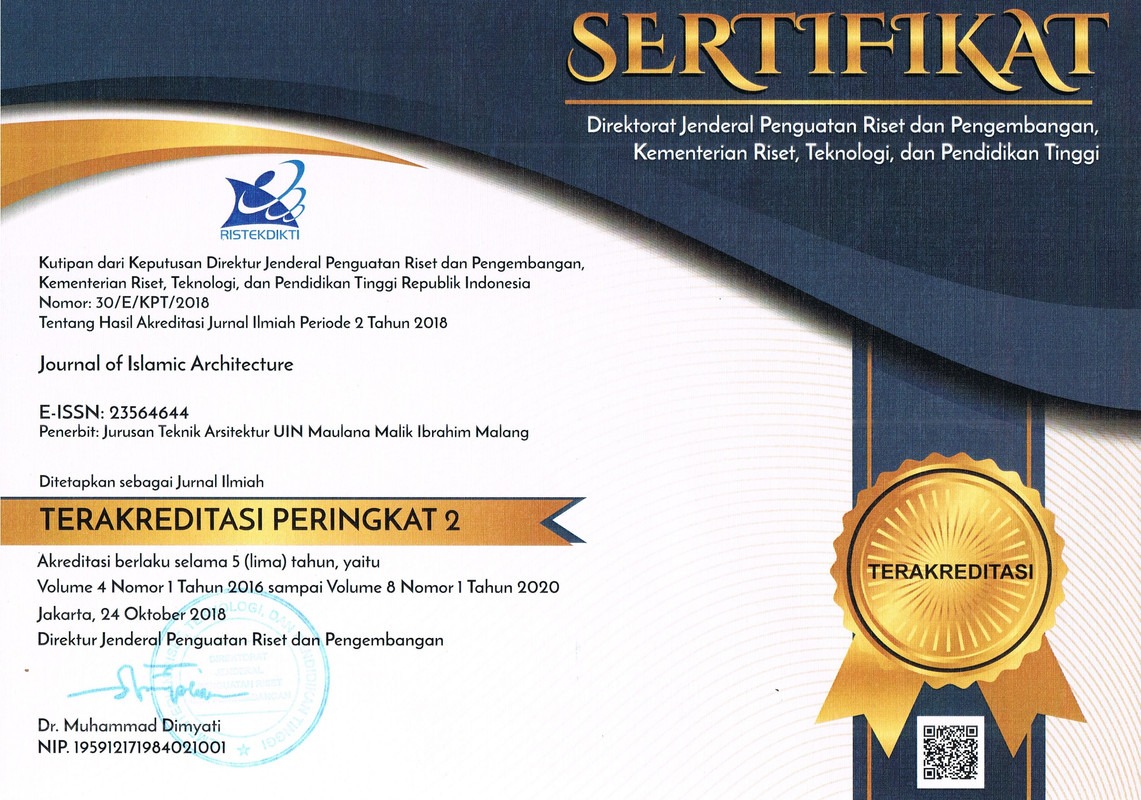Historical timber as a sustainable material, Studies about Islamic architecture in Egypt
Abstract
Wood is an old – modern material, It was and still used in a wide range in a various purposes as construction, decoration and remains the most popular material all over the world, The research provides an overview of the role of timber as an important heritage element which forms the main characters and distinguishes features of many historical buildings in Islamic architecture and used widely in many applications, it had been played a great role in construction and structure of buildings, besides that it had been used in a beautiful purpose in different places whether indoors or outdoors use . The research presents the case studies of historical timber in different types of building in Islamic architecture which constructed from more than 1400 years ago, although the historical timber in old buildings exposed to many disasters and faced quite numbers of problems as a result of natural phenomena, man-made, humidity, and termites but it still stands proudly as a great sustain materials. The research shows how he use of timber in historical buildings as sources of inspiration and living evidence of ways of sustainable building practices the types of deterioration which appeared clearly an effect on the statue of historical timber, for that the research introduces some recommendations in the light of ICOMOS international charter “ Principles for the Preservation of Historic Timber Structures 1999” that Emphasizes the necessity of taking a serious steps and clear strategy to save our heritage elements
Keywords
Full Text:
PDFReferences
W. V. Davies, “Ancient Egyptian timber imports: An analysis of wooden coffins in the British Museum”, In Davies W. V. and Schofield L. (E.ds) Egypt, the Aegean and the Levant, London, 1995.
K. Larsen, N. Marstein, Conservation of Historic Timber Structures, An ecological approach in Butterworth-Heinemann Series in Conservation and Museology. 2000
L. Saleh, Earthquake In Egypt Destruction of Sacral And Profane Buildings In Historic Cairo, Cultural Heritage without Borders (CWHB). 2005.
D. Pugh, “Egypt Struggles to Save Cairo's Islamic Heritage Earthquake Shakes Response from International Experts to Crumbling Ancient Buildings”, Christian Science Monitor newspaper. 1993.
M. Solyman, Earthquakes, Vol 293, Egypt: Public Organization of Book, 1993.
L. Robert, “History, Nature and Products of Wood,“ Forests and Forest Plants, vol. II, UNESCO, EOLSS, Information on http: http//www.eolss.net.
ICCROM & ATHAR Program, Regional Course on Conservation of Organic Materials in Heritage Sites and Collections, 2011
R. Kliger, “Moisture Effects on Building and Structural Timber”, EDG Drying Seminar, Chalmers University of Technology Steel and Timber Structures, Göteborg, Sweden, 2006.
F. Mecklenburg, C. S. Tumosa, and D. Erhardt, Structural Response of Painted Wood Surfaces to Changes in Ambient Relative Humidity, http://www.getty.edu/conservation/publications_resources/pdf_publications/pdf/paintedwood6.pdf.
Forest Products Laboratory, “Wood handbook: wood as a construction material", Gen. Tech. Rep. FPL–GTR–113. Madison, WI: U.S. Department of Agriculture, Forest Service, Forest Products Laboratory, 1999.
RAC [Resource Assessment Commission] Kakadu Conservation Zone Inquiry, Response to draft report / by the Australian Mining Industry Council. , Australian Mining Industry Council, Australia. Resource Assessment Commission [Canberra] : The Council, 1991.
F. Werner and K. Richter, “Wooden Building Products in Comparative LCA: A literature review”, A Synthesis of Research on Wood Products & Greenhouse Gas Impacts, FPInnovations, 2010.
Handbook Timber structures, Leonardo da Vinci Pilot Project, Educational Materials for Designing and Testing of Timber Structures – TEMTIS, 2008
National Board of Housing, Building and Planning, To handbook start page Boverket National Board of Housing, Building and Planning, https://www.boverket.se
Boverket´s Building Regulations – Mandatory Provisions and General Recommendations, BBR, https://www.boverket.se/.../boverkets-building-regulations--mandatory-provisions. 2016
J. Rice, A. K. Robert, J. M. Michael, and H. C. David, “Wood as a Restorative Material” in Healthcare Environments, FPInnovations, Appearance Wood Products and Psychological Wellbeing, Society of Wood Science and Technology, 2015.
Wood and Human Health, FPInnovations, “Interior Wood Use in Classrooms Reduces Pupils’ Stress Levels”, Institute of Physiology, Medical University of Graz, Austria; HUMAN RESEARCH, Institute for Health, Technology and Prevention Research, Weiz, Austria.
Wood in Fatimid era, Information on http://www.islamicarchaeology.blogspot.com/2012/03/blog-post_6153.html.
Forest Products Laboratory,"Wood handbook: wood as a construction material", Gen. Tech. Rep. FPL–GTR–113. Madison, WI: U.S. Department of Agriculture, Forest Service, Forest Products Laboratory, 1999.
L. Saleh, Earthquake in Egypt Destruction of Sacral and Profane Buildings in Historic Cairo, Cultural Heritage without Borders (CWHB), 2005.
W. B. Morton," Bayt al-Razzaz Palace: Developing an Existing Conditions Report”, APT Bulletin, Vol. 28, No. 2/3, p.44-50. 1997.
B. al‐Razzaz, “The Challenge of Adaptive Use for a Vacant Mamluk Palace in Cairo,” International Journal of Heritage Studies, Volume 3, Issue 3, 1997.
ICOMOS Charter, “Principles for the Preservation of Historic Timber Structures” at the 12th General Assembly in Mexico, and Developed and promulgated by the ICOMOS Wood Committee October 1999, Information on: http: ///www.icomos.org.
Canadian Wood Council, Third Edition, Ottawa ,1997.
DOI: https://doi.org/10.18860/jia.v5i1.4500
Refbacks
- There are currently no refbacks.






